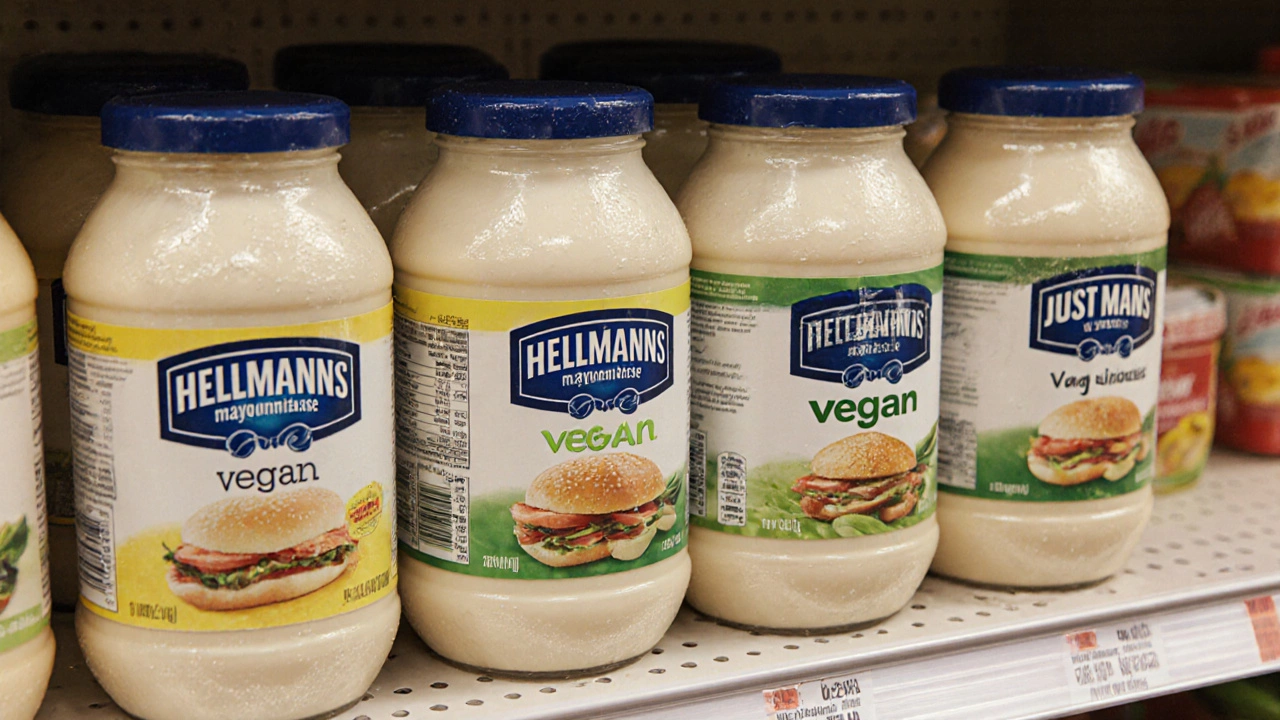Vegan Mayo: Simple, Creamy, and Full of Flavor Without Eggs
When you think of vegan mayo, a creamy, tangy condiment made without eggs or dairy, often using oil, vinegar, and plant-based emulsifiers like aquafaba or soy milk. Also known as egg-free mayo, it’s not just a substitute—it’s a full-flavored upgrade that works in sandwiches, salads, and dips just like the real thing. You don’t need eggs to get that rich, smooth texture. The secret? It’s all in the emulsion—mixing oil slowly into a base of water or plant milk with a little acid and a pinch of salt. Done right, it’s just as thick, just as creamy, and way more forgiving than traditional mayo.
Most store-bought vegan mayo uses soy, pea protein, or aquafaba (the liquid from canned chickpeas) to bind the oil. But homemade versions? They’re even better. You can use cashews soaked overnight, silken tofu, or even blended sunflower seeds. Each gives a slightly different texture—some are richer, some are lighter—but they all deliver that satisfying mouthfeel. And because you control the ingredients, you skip the preservatives, refined oils, and hidden sugars often found in commercial brands. This isn’t just about being vegan—it’s about eating cleaner, smarter food.
Why does this matter? Because vegan mayo, a versatile, plant-based alternative to traditional mayonnaise. Also known as dairy-free mayo, it’s a staple in plant-based kitchens shows up everywhere: in potato salad, on veggie burgers, as a base for dressings, or stirred into pasta for a creamy finish. It pairs perfectly with roasted vegetables, wraps, and even as a dip for fries. And if you’ve ever tried to make a vegan coleslaw without mayo, you know how much flavor you’re missing. This isn’t a compromise—it’s a choice that opens up more flavor possibilities.
What’s interesting is how often aquafaba, the liquid from cooked chickpeas, used as an egg replacer in baking and emulsions like vegan mayo shows up in these recipes. It’s not just a gimmick—it’s a real kitchen hack that’s been used for decades in Mediterranean and Middle Eastern cooking. When whipped, it mimics egg whites. When mixed with oil and vinegar, it creates a stable emulsion. And it’s cheap. A can of chickpeas costs less than a jar of store-bought vegan mayo, and you get the bonus of beans for your next meal.
And then there’s the flavor. Many people assume vegan mayo tastes bland. But that’s only if you use low-quality oil or skip the seasoning. A good vegan mayo needs a touch of Dijon mustard, a squeeze of lemon, maybe a pinch of garlic powder or smoked paprika. It’s not about replacing eggs—it’s about building flavor from the ground up. Once you get the balance right, you’ll wonder why you ever used the old kind.
You’ll find recipes here that use everything from cashews to white beans to tofu. Some are quick, others take a little time. All of them are practical. Whether you’re new to plant-based cooking or just looking for a better mayo, you’ll find something that works for your kitchen. No fancy tools needed. Just a bowl, a whisk or immersion blender, and a little patience. The results? Creamier, fresher, and way more satisfying than anything you’ll find on a shelf.
There’s no magic here—just smart, simple cooking. And once you make your first batch, you’ll never go back.

Is Mayonnaise Vegan Friendly? The Truth About Egg-Free Mayo
Vegan mayonnaise is widely available and tastes just like the real thing. Learn what makes it vegan, which brands to trust, how to make it at home, and how to use it in recipes - without eggs or dairy.
More Detail